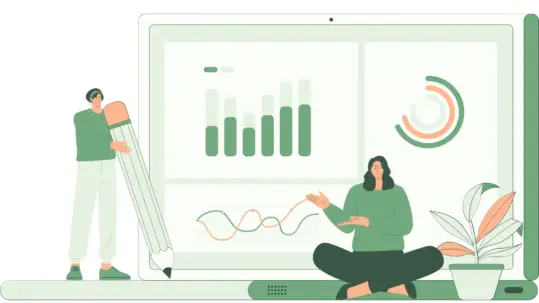
23 Jun Accessibility and audiovisual translation: the audio description
This article is part of a series of posts on accessibility here on the Creative Words blog. As we know, translation and localization are to bring as much content as possible to as many people as possible. Accessibility is a natural extension of this concept. Keep following us to learn about a vast and crucial aspect of our industry.
If you recently watched a series or movie on Netflix and wanted to change the language of the audio for whatever reason (we purists have to carry this burden), you may have noticed that among the available tracks you often find “English (Audio description).” Unfortunately, it is not available for all movies and series, but it is becoming increasingly popular.
What is audio description?
Audio description is basically the auditory equivalent of a subtitle for the hearing impaired. If we want to be more academic, audio description is a form of inter-semiotic translation (i.e., from one channel to another, in this case from the visual to the auditory) that consists of the addition to a visual content (film, series, etc.) of an additional audio track that is complementary to the original sound track of the product. This additional track describes what is happening on the screen, it can be heard in the pauses between character dialogues and silent times. Who benefits from this is those who are visually impaired, or those who in any case do not have the ability to see what is happening on the screen.
However, it is not simply “narration” of what is happening on the screen (e.g. telling where a character is or what they are doing), but true description of characters (physical appearance, what they are wearing…), places (is it daytime? Is it night?) and so on, to give those who do not have the opportunity to see to imagine the scene as it actually appears on the screen.
It is an extremely interesting and technically complex technique. Just think of how hard it is to describe a scene rich in detail in a short time, or science fiction scenes that show extremely alien images that are difficult for even our imaginations to conceive. It is also very difficult to strike a balance between describing in a sterile, dry manner or, when possible, providing more detail so as to paint a more vivid and richly detailed scene. This last feature has been a source of further debate in the field of audio description: is it actually an art, as writing a screenplay can be, and should it therefore offer unique creative content full of meaning, or should it instead merely describe what is happening in the scene without “taking a stand”?
After all, storytelling about what happens on-screen in a movie is certainly not something new and limited to blind people: it is a perfectly valid narrative mode and one that elicits a definite artistic effect when done with this purpose in mind. It was not until the 1970s, however, that audio description as we know it today began to take shape and, more importantly, began to be seen as a technique for aiding people with visual impairments.
The accessibility of audiovisual content
Over the years, more and more “rules” have been codified on how an audio description script should be written: on the saving of words to be used, on which verbs to prefer, when and how to describe places, when and how to indicate a change of scene, even when to keep distinctive visual traits of a character (e.g., a particular hairstyle, frequent gesturing…) or eliminate them if not relevant to the plot or the character itself.

In the U.S., since the late 1980s a more and more widespread use of the technique has been seen, which also begins to be offered to the public in cinemas, through the use of special headphones. In England, in the late 1980s, similar service for theatrical performances also took place.
From these first steps we come to the present day, where the provision of products with audio description is encouraged by a European Union directive (2007/65/EC), which reads:
“The right of people with disabilities and the elderly to participate and be integrated into the social and cultural life of the Community is inseparably linked to the provision of accessible audiovisual media services. The means to achieve such accessibility should include sign language, subtitling, audio description, and easy-to-understand menu navigation, among others.”
Subsequently, the European Union has continued and is continuing to fund projects that aim to make audiovisual content increasingly accessible, with projects such as ADLAB PRO (2016-2019). Italy does not yet have real regulations governing content with audio description (unlike other countries), so it relies on European standards. And yet, although there are no very precise estimates, about 4 percent of the Italian population is affected by some kind of visual impairment (blind or visually impaired), a rather significant number that is one of the reasons we want to explore this topic further and encourage the spread of this technique.
This small introduction was intended to give a rough idea on how deep and complex the world of audio description is. Highlighting such aspects of the industry may actually help someone who does not yet know about them to discover and make them known to more and more people, which in turn we hope will encourage their more frequent dissemination.
In closing, I suggest the easiest way to understand what audio description is, if it is still not clear after all these words: open Netflix, choose your favorite series, check if it has an audio description track, and watch it.

Unstoppable reader and videogame lover, he loves peaceful hikes in the mountains as well as relaxing and swimming in the sea.





